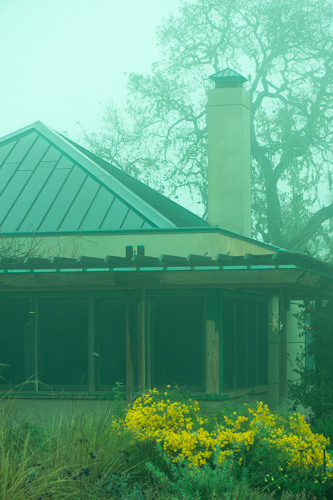Well, I just spent the whole afternoon on this, but I’ve now got a set of settings for the D4 that give a pretty good approximation to the real raw histogram. The white balance was the problem. Here’s my reasoning; I’m not sure of it yet, but it seems to make sense so far. The sensor has some innate white balance, some color that will excite the three colored photosites equally. I just need to find out about what that is, and set the camera’s manual white balance to it. The preview image will have the wrong white balance, unless the proper white balance for the scene happens to be the camera’s native white balance, which is an unlikely occurrence.
I fiddled around with the manual white balance settings until I zeroed in on a color temperature of 5000 degrees Kelvin and all the green offset available: six steps. I left the contrast set to minimum, the brightness to minimum, and the saturation one click down. In a light rain, I made the following exposure:
With the in-camera histogram set for ETTR (note the weird green preview image):
Here’s the real raw histogram:
And here’s the Lightroom histogram with the white balance set to “as shot”:
The data in the image is fine in spite of the wonky as shot color balance. Here’s the image with the white balance in Lightroom set to “daylight”:
And here’s the Lightroom histogram with that setting:
Like any moderate to low contrast image exposed using ETTR (and this was low contrast because of the rain), I needed to correct it with some Lightroom adjustments. Here’s the corrected image:
And here’s its histogram:








Leave a Reply